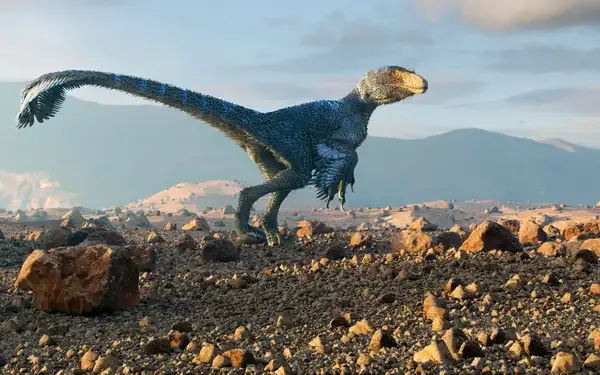- Home >
- Science
- > Innovation
How Do We Know That Dinosaurs May Have Had Feathers?
Evidence for feathered dinosaurs comes from fossil discoveries that reveal preserved feather imprints, particularly in species like the Velociraptor and Microraptor. These fossils show feather structures similar to modern birds. Additionally, the presence of quill knobs, which are bony projections where feathers anchor, further supports this theory. The similarities in skin and bone structures between birds and certain dinosaur species also suggest a common evolutionary origin, indicating that some dinosaurs likely had feathers for insulation, display, or flight.

Over the years, the perception of dinosaurs has transformed dramatically. Once envisioned as scaly, lizard-like creatures, modern paleontological evidence suggests that many dinosaurs may have actually had ''feathers''. This revelation not only alters our understanding of dinosaur appearance but also their behavior and evolution. In this article, we will explore the evidence supporting the idea that dinosaurs were feathered and what this means for our understanding of these ancient creatures.
Key Evidence of Feathered Dinosaurs
The idea that some dinosaurs may have had ''feathers'' stems from several lines of evidence, prominently featuring fossil discoveries. Below is a chart summarizing key findings that support this theory:
| Fossil Discovery | Location | Year Discovered | Significance |
|---|---|---|---|
| Archaeopteryx | Germany | 1861 | First known feathered dinosaur, showcasing a transitional form between dinosaurs and birds. |
| Microraptor | China | 2000 | Small dinosaur with four wings and feathers; evidence for gliding and possibly powered flight. |
| Sinornithosaurus | China | 1999 | Feathered dinosaur showing characteristics similar to modern birds. |
| Caudipteryx | China | 1998 | Feathered dinosaur with asymmetrical feathers suggesting flight capabilities. |
| Yutyrannus | China | 2012 | Large theropod dinosaur, demonstrating that even large species may have had feathers. |
Types of Feathers Found
Feathers are not all created equal. The types of feathers found in various dinosaur fossils vary significantly, indicating a complex evolutionary history. Here are the primary types of feathers identified:
- Contour Feathers: These are similar to the feathers found on modern birds and are believed to have provided insulation and display features.
- Filamentous Feathers: These resemble hair-like structures and may have served as primitive feathers, possibly for insulation.
- Flight Feathers: Found in species like ''Microraptor'', these feathers were likely adapted for gliding or powered flight.
Evolutionary Implications
The presence of ''feathers'' in dinosaurs provides significant insights into their evolutionary lineage. The discovery of feathered species suggests that birds are not merely descendants of dinosaurs but rather a specialized branch of theropod dinosaurs. This challenges the traditional view of dinosaur evolution and highlights the ''link'' between birds and dinosaurs.
Furthermore, the existence of feathers in various dinosaur species indicates that feathers may have initially evolved for purposes other than flight, such as thermoregulation or display. This evolutionary adaptation underscores the complexity and adaptability of dinosaurs in their environments.
Behavioral Insights
The presence of ''feathers'' in dinosaurs also opens up discussions about their behavior. For example, some paleontologists suggest that feathers could have played a crucial role in mating displays. The vibrant colors and patterns of feathers, much like those in modern birds, could have been used to attract mates or establish territory.
Additionally, feathers may have provided insulation, allowing dinosaurs to thrive in a broader range of climates. The discovery of feathered dinosaurs in various regions, including cold environments, suggests that feathers were advantageous for survival, contributing to their longevity and diversity.
Conclusion
In conclusion, the evidence supporting the idea that some dinosaurs may have had ''feathers'' is robust and multifaceted. From fossil discoveries to evolutionary implications, this evidence reshapes our understanding of these magnificent creatures. As more fossils are uncovered, our knowledge about the diversity of ''feathered dinosaurs'' continues to grow, revealing a rich tapestry of life that once roamed the Earth.
Understanding the role of ''feathers'' in dinosaurs not only enhances our appreciation for their complexity but also provides a deeper insight into the evolutionary history that connects them to modern birds. With ongoing research and new discoveries, the narrative of dinosaurs is far from complete, and the potential for further revelations about these ancient beings is immense.












